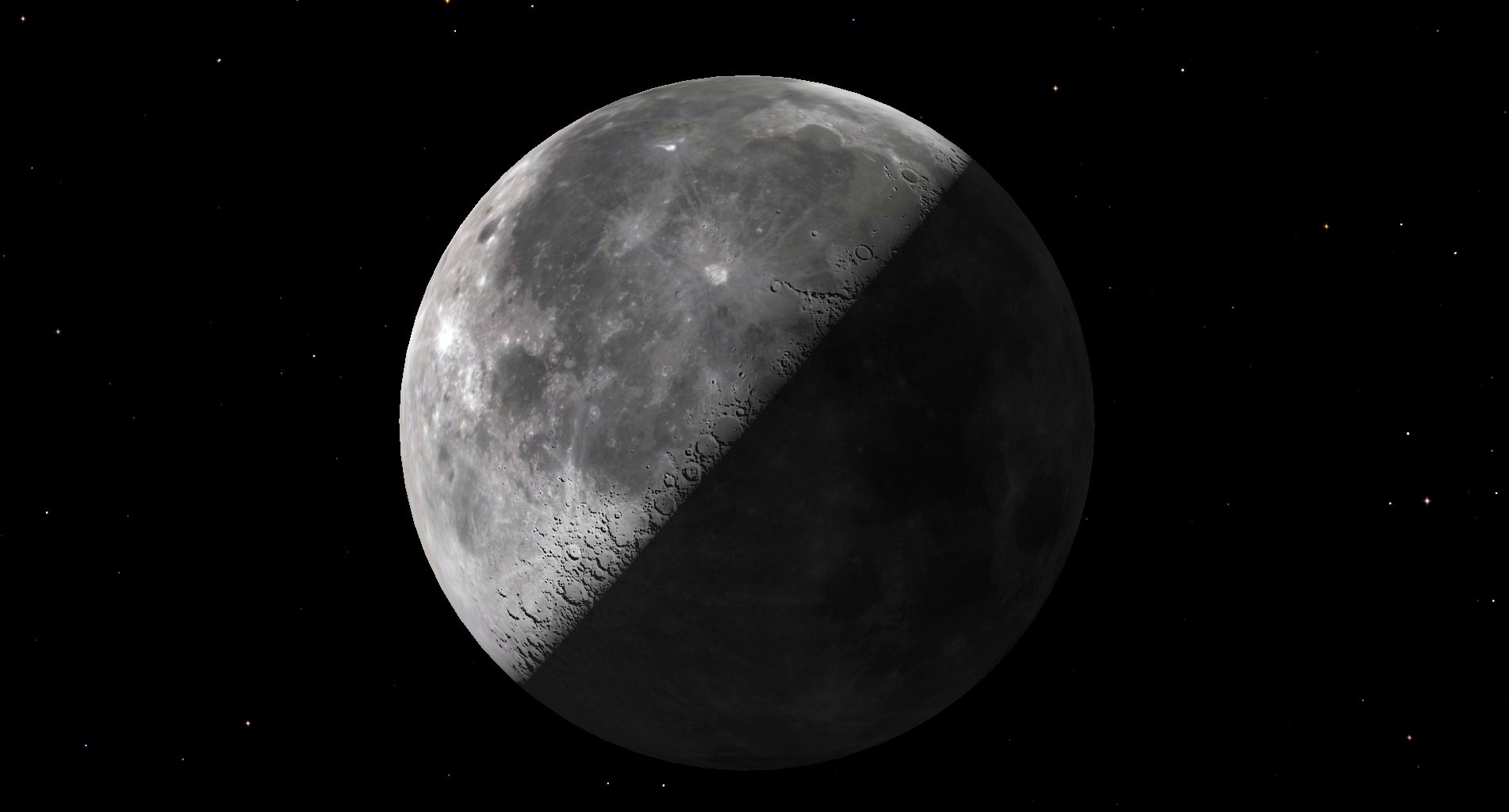See the half-lit third quarter moon shine tonight (Oct. 17)
The half-illuminated moon will rise just before midnight and will be visible in the sky prior to dawn.

On Monday (Oct. 17), the moon will be in its final quarter or third quarter phase with half of its disk illuminated by the sun.
During its third and final quarter phase, as seen from New York City, the moon will rise at around 11:15 p.m. EDT (0315 GMT on Oct.18) and will reach an altitude of 75 degrees (a little more than seven fist's widths at arm's length) over the southern horizon, according to In The Sky.org. The final quarter moon will then disappear from view at around 6:49 a.m. (1049 GMT) as the sun rises. The moon will then set at around midday on Oct. 18.
The names 'third quarter' or 'final quarter' moon may initially be confusing as during this phase the moon is actually half-illuminated by the sun. The name actually refers to the fact that during this phase, the moon is three-quarters of the way through its 29.5-day lunar cycle.
Related: What is the moon phase today? Lunar phases 2022
As the moon orbits the Earth roughly every four weeks, it cycles from the new moon, when it is completely dark, to the full moon, at which point it is completely illuminated. From the full moon, our natural satellite then cycles back to the new moon phase, thus signaling the start of a new lunar cycle.
The final quarter moon falls halfway between the full moon phase — which last occurred with the Hunter's Moon on Oct. 9 — and the next new moon which falls on Oct. 25.
Read more: Stunning Full Hunter's Moon of October 2022 mesmerizes skywatchers all over the world (photos)
Get the Space.com Newsletter
Breaking space news, the latest updates on rocket launches, skywatching events and more!

The moon looks absolutely incredible through a good telescope with a moon filter. We recommend the Celestron Astro Fi 102as the top pick in our best beginner's telescope guide.
In the lead-up to the new moon, the moon rises later and later each day, meaning that it is visible for less time during the night and appears closer to the eastern horizon before sunrise. At the same time, the illuminated side of the moon recedes with less and less of its face being lit by the sun.
Following the new moon, this situation is reversed. The moon rises earlier and earlier each day becoming visible for longer each night. The illuminated side of the moon grows until once again the moon's face is half-illuminated during the first quarter phase.
Which side of the moon an observer sees illuminated during the first quarter and final quarter moon depends on where they are positioned on Earth.
The first quarter moon then leads up until the full moon at which time the moon will be visible for most of the night.
November's full moon — the Beaver Moon — falls on Monday, Nov. 7, and this will a 'blood moon' as it will be accompanied by a total lunar eclipse. This happens because the moon, the sun, and Earth line up with our planet in the middle. As a result, Earth's shadow is onto the moon giving the full moon a reddish, coppery color.
If you're looking to take the best photos of the moon that you can, our how to photograph the moon guide is full of expert tips on techniques, times and tools to help you start taking the most impressive lunar photos you can. Our best cameras for astrophotography and best lenses for astrophotography can also help you take the best moon images you can, no matter your skill level.
Follow us on Twitter @Spacedotcom or on Facebook.
Join our Space Forums to keep talking space on the latest missions, night sky and more! And if you have a news tip, correction or comment, let us know at: community@space.com.

Robert Lea is a science journalist in the U.K. whose articles have been published in Physics World, New Scientist, Astronomy Magazine, All About Space, Newsweek and ZME Science. He also writes about science communication for Elsevier and the European Journal of Physics. Rob holds a bachelor of science degree in physics and astronomy from the U.K.’s Open University. Follow him on Twitter @sciencef1rst.









